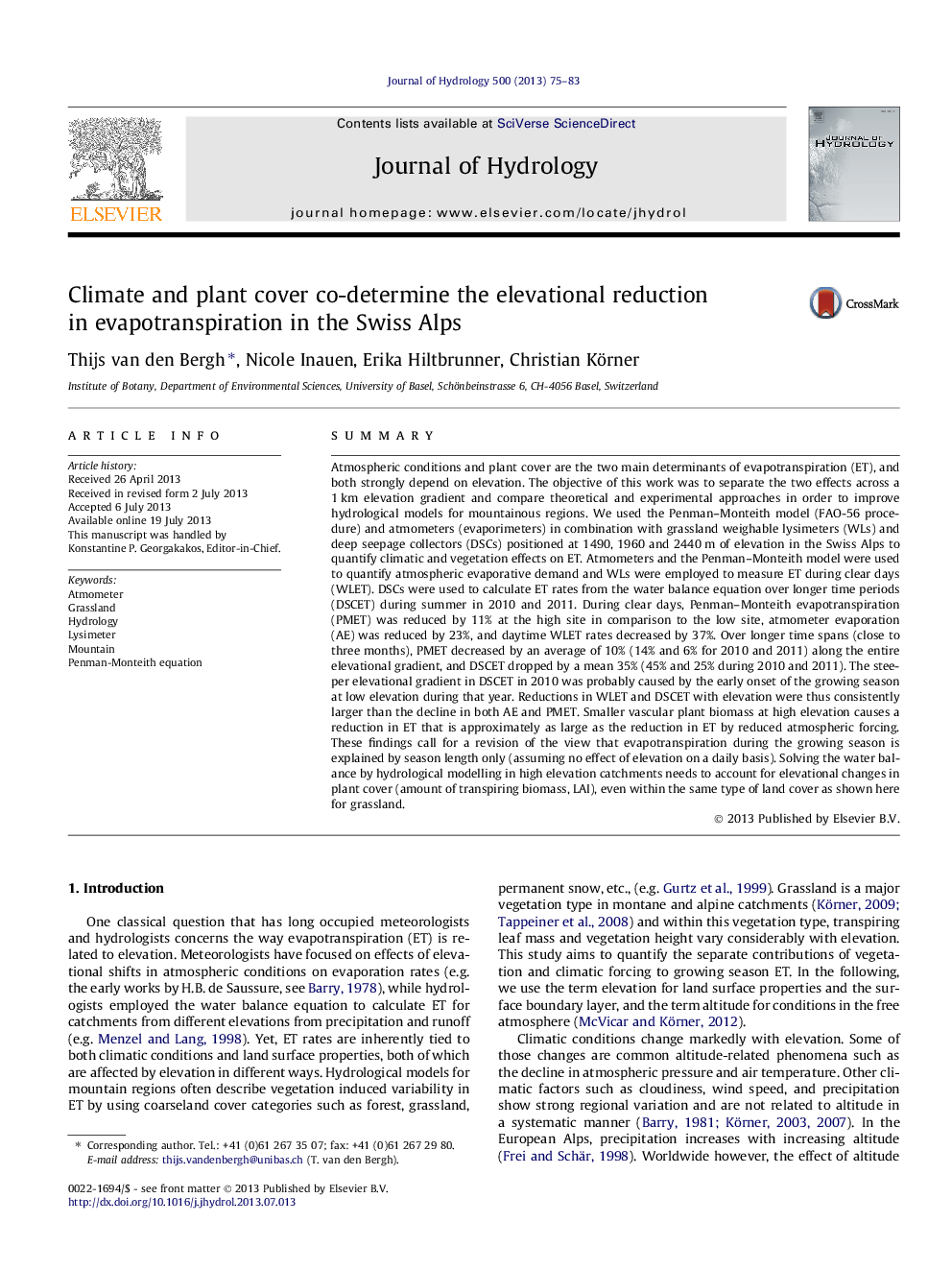| کد مقاله | کد نشریه | سال انتشار | مقاله انگلیسی | نسخه تمام متن |
|---|---|---|---|---|
| 4576099 | 1629948 | 2013 | 9 صفحه PDF | دانلود رایگان |

• We determined relative contributions of climate and vegetation to ET with elevation.
• For equal time periods, grassland ET decreased by 30% km−1 in the Alps.
• Half of this decline was due to evaporative forcing, half due to vegetation effects.
• Models based on climatic forcing only may underestimate the decline in ET.
• ET models should account for the elevational reduction in plant biomass.
SummaryAtmospheric conditions and plant cover are the two main determinants of evapotranspiration (ET), and both strongly depend on elevation. The objective of this work was to separate the two effects across a 1 km elevation gradient and compare theoretical and experimental approaches in order to improve hydrological models for mountainous regions. We used the Penman–Monteith model (FAO-56 procedure) and atmometers (evaporimeters) in combination with grassland weighable lysimeters (WLs) and deep seepage collectors (DSCs) positioned at 1490, 1960 and 2440 m of elevation in the Swiss Alps to quantify climatic and vegetation effects on ET. Atmometers and the Penman–Monteith model were used to quantify atmospheric evaporative demand and WLs were employed to measure ET during clear days (WLET). DSCs were used to calculate ET rates from the water balance equation over longer time periods (DSCET) during summer in 2010 and 2011. During clear days, Penman–Monteith evapotranspiration (PMET) was reduced by 11% at the high site in comparison to the low site, atmometer evaporation (AE) was reduced by 23%, and daytime WLET rates decreased by 37%. Over longer time spans (close to three months), PMET decreased by an average of 10% (14% and 6% for 2010 and 2011) along the entire elevational gradient, and DSCET dropped by a mean 35% (45% and 25% during 2010 and 2011). The steeper elevational gradient in DSCET in 2010 was probably caused by the early onset of the growing season at low elevation during that year. Reductions in WLET and DSCET with elevation were thus consistently larger than the decline in both AE and PMET. Smaller vascular plant biomass at high elevation causes a reduction in ET that is approximately as large as the reduction in ET by reduced atmospheric forcing. These findings call for a revision of the view that evapotranspiration during the growing season is explained by season length only (assuming no effect of elevation on a daily basis). Solving the water balance by hydrological modelling in high elevation catchments needs to account for elevational changes in plant cover (amount of transpiring biomass, LAI), even within the same type of land cover as shown here for grassland.
Journal: Journal of Hydrology - Volume 500, 13 September 2013, Pages 75–83